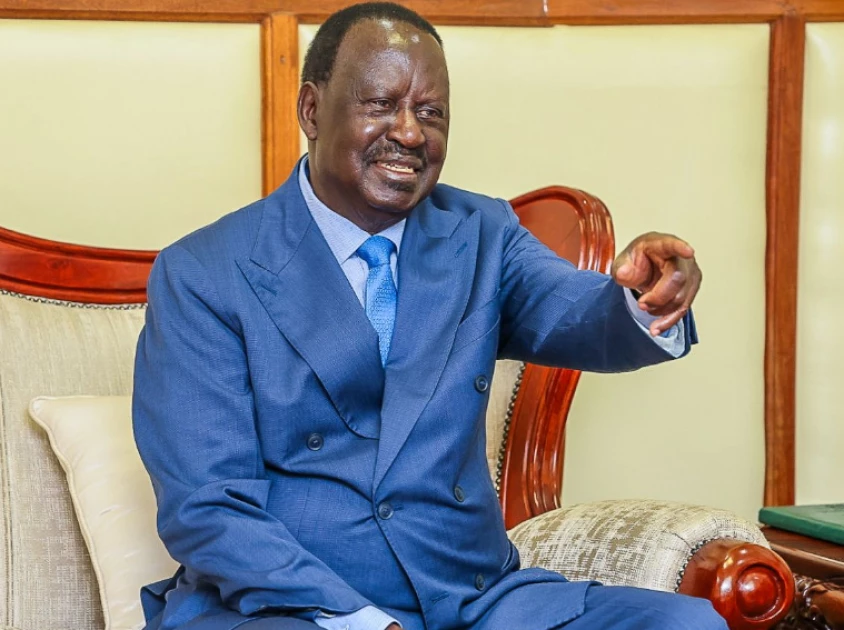A lifetime of battles: Raila Odinga's five stabs at the presidency

The late former Prime Minister Raila Odinga during a past address. PHOTO | COURTESY

Audio By Vocalize
Raila Amolo Odinga will forever be immortalized in history
books as a prolific leader whose style of politics traversed generations.
Despite being celebrated as a fierce pro-democracy campaigner,
a champion of reforms, and a fountain of the political career of many leaders,
Raila never achieved his goal of becoming Kenya's president, making valiant
efforts five times.
On August 15, 2022, at the Bomas of Kenya in Nairobi, the then
IEBC Chairperson, the late Wafula Chebukati, announced the winner of a fiercely
contested presidential election.
“William Samoei Ruto,” Chebukati declared, announcing the then
Deputy President as the winner after garnering 7,176,141 votes against Raila
Odinga’s 6,942,930 votes.
The declaration of Ruto as the fifth president confirmed Raila
Odinga’s fifth loss in his quest to clinch the State House job.
The turn of events sent shockwaves across Raila Odinga’s
political camp, with chaos erupting at the national tallying center as his
supporters insisted he had won the election.
This was the fifth unsuccessful time Raila Odinga had run for
the presidency, and each time, he alleged electoral fraud.
His first attempt was in 1997 when he contested as the
National Development Party’s candidate. Raila finished third in the election,
with the late Mwai Kibaki of the Democratic Party taking second place and the
incumbent, Daniel Arap Moi of KANU, winning the election.
He skipped the presidential race in 2002 to support Mwai
Kibaki but returned to the ballot in 2007 as a candidate for the Orange
Democratic Movement.
Raila lost to Kibaki in a highly contested election that
marked one of the darkest moments in Kenya’s political history. Allegations of
vote rigging led to deadly demonstrations that claimed more than 1,100 lives
and displaced about 350,000 people.
To end the post-election violence, former UN Secretary-General
Kofi Annan brokered a power-sharing arrangement that led to the creation of a
Grand Coalition Government, with Raila appointed Prime Minister.
Raila was back on the ballot for a third time in 2013,
convinced that he would win the election. He put up a spirited campaign against
Uhuru Kenyatta of The National Alliance (TNA).
Uhuru Kenyatta and his running mate William Ruto won the
election with 50.51 percent of the total votes against Raila’s 43.7 percent.
Raila unsuccessfully contested the results at the Supreme
Court, which upheld Kenyatta’s victory.
In 2017, during his fourth run for office, a landmark ruling
by the Supreme Court changed the country’s political history.
Raila had lost again to Uhuru Kenyatta, who was re-elected
with 54.17 percent of the vote, compared to Raila’s 44.94 percent.
Raila challenged the results at the Supreme Court, which
subsequently annulled the election and ordered a fresh presidential poll within
60 days.
However, Raila boycotted the repeat election held on October
26, 2017, enabling Uhuru Kenyatta’s victory with an overwhelming 98.3 percent
of the vote.
Raila said his decision to stay away was informed by claims
that the IEBC had no intention of implementing reforms to guarantee a credible
process.
The Orange Democratic Movement leader and his supporters later
organized a ceremony to swear him in as the “People’s President.” Miguna
Miguna, who administered the oath, was deported, while Raila went on to enter a
truce with his longtime political rival, Uhuru Kenyatta.
Raila would once again claim victory in the 2022 presidential
election, where President William Ruto was declared the winner. This fifth loss
would mark the last in his highly decorated political career.

Leave a Comment